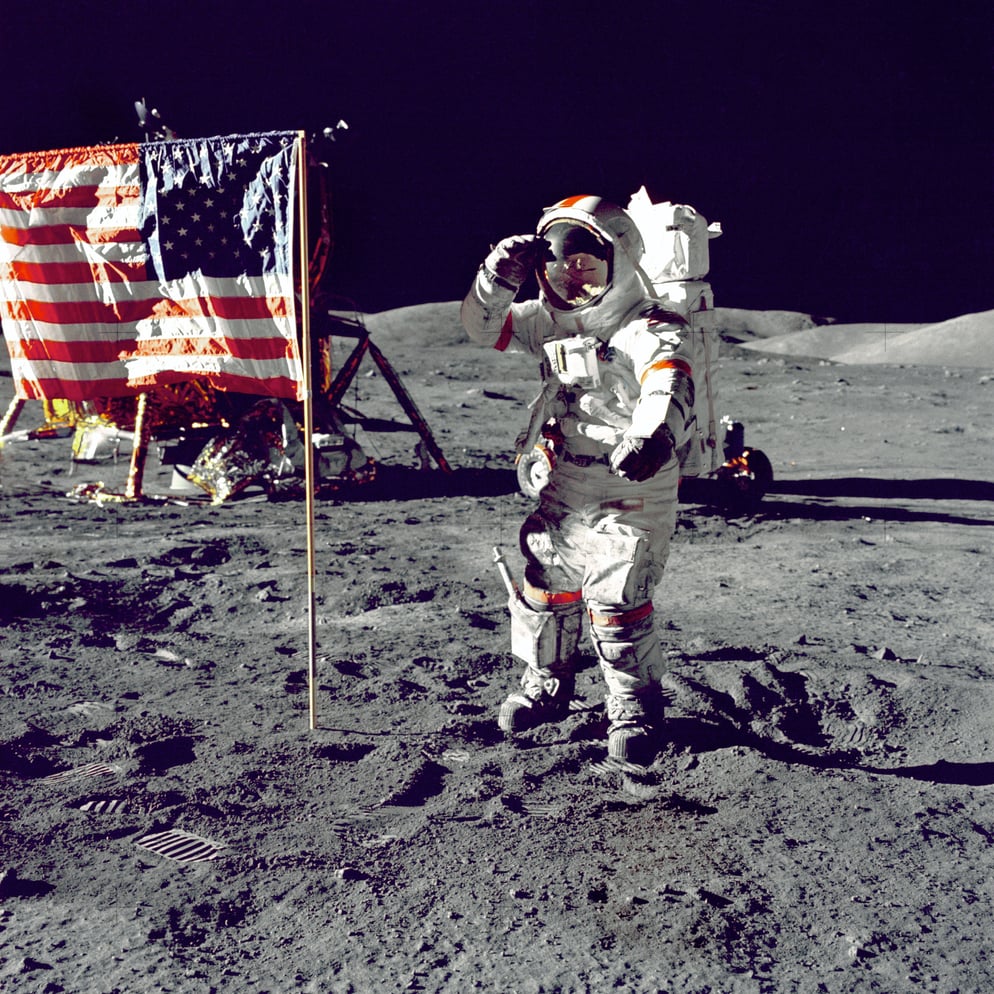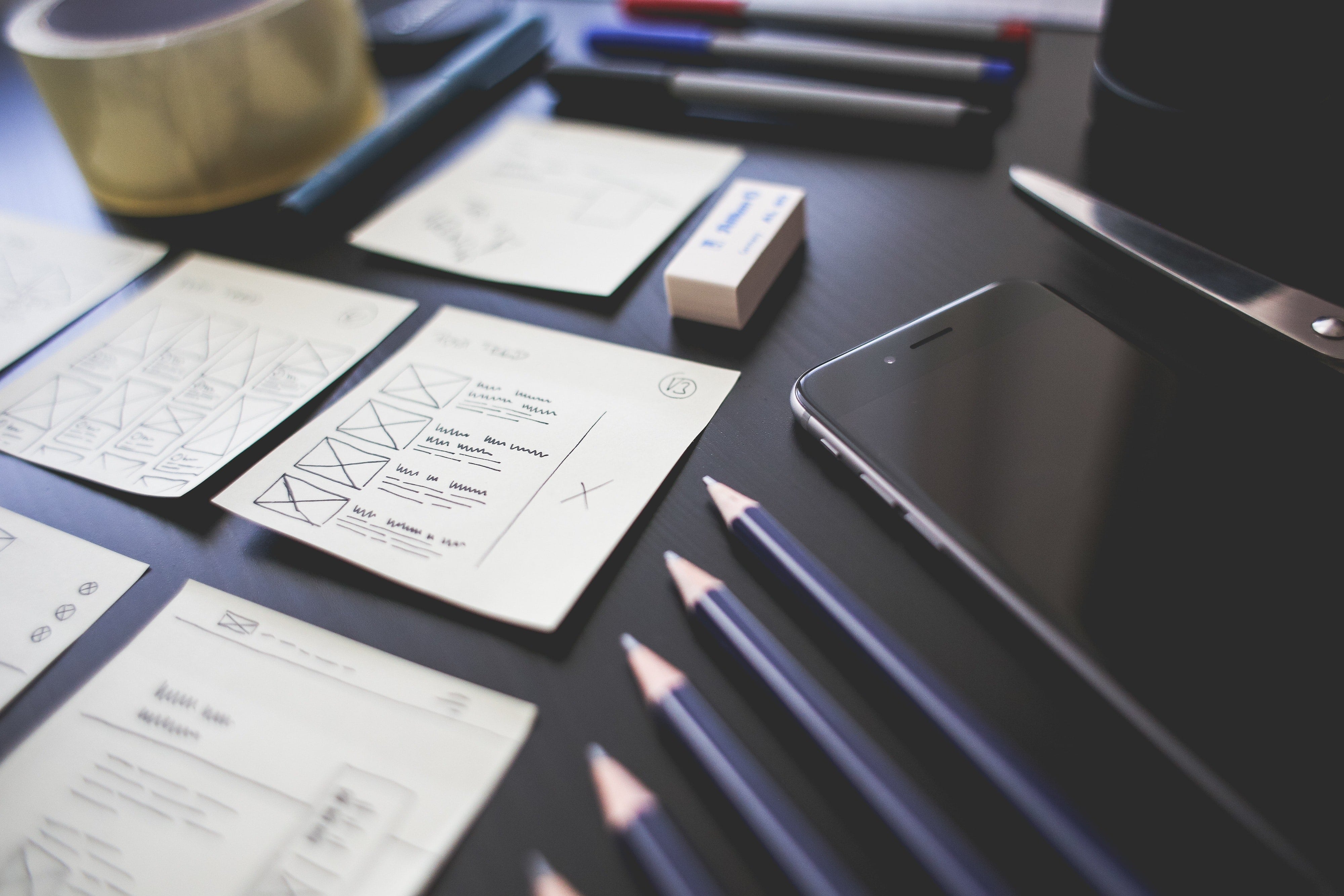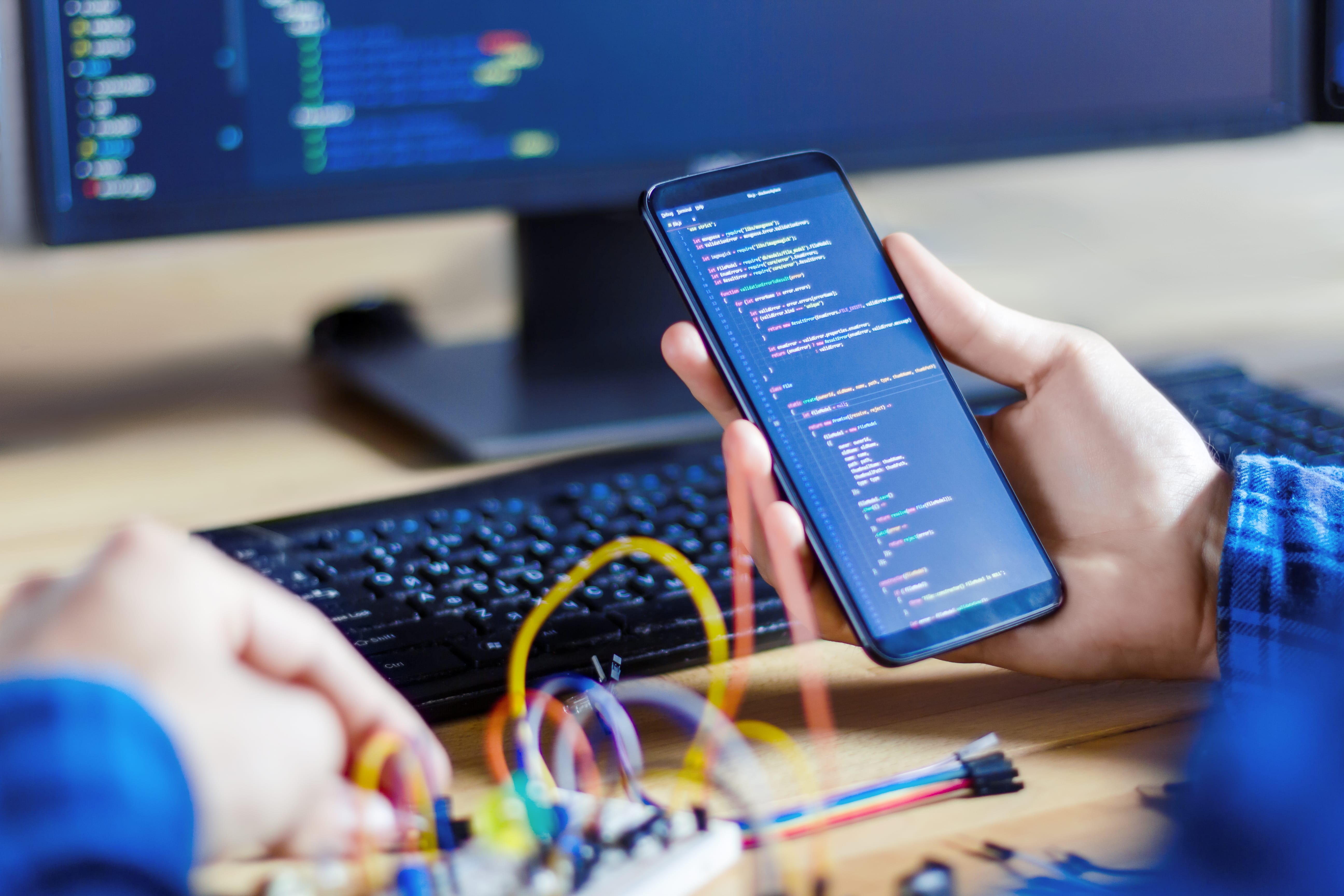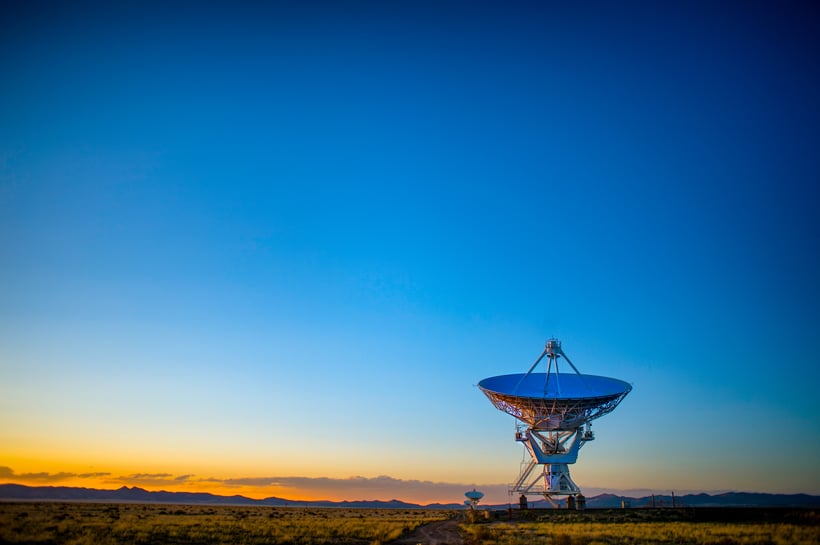
We choose to go to an MVP7 phases of the software and hardware development process inspired by NASA

We have an idea, and we choose to go to an MVP. What's next? Use NASA's example and processes to successfully go through all phases of creating a new software or hardware product.
Creating a product, regardless of whether it is software or hardware, is complicated and complex. It is an ideal environment for creating countless communication, technological, and quality errors. The only remedy can be an efficient process - to make sure that when we start the next phase of work on the product, we have the maximum knowledge and confidence that we are going in the right direction.
Through a series of articles, I want to show our process from practitioners at Untitled Kingdom. In this blog post, I will present it briefly from A to Z.
Or, more specifically, from R to M - from Reasearch to MVP.
In the next blog posts, I will focus on each phase separately.

Desperate times call for desperate measures
Do you know the famous podcast 13 Minutes to the Moon?
It's full of real-life, verified stories from NASA, mostly about the mission to the Moon. And it's a great example of successful teamwork despite (or because of?) working in an uncertain, changeable, and unrecognized environment.
Key insights:
- the mission control center is made up of an incredibly young team - the average age is 27
- the team is not limited by schematic thinking - instead of well-set patterns, everyone is asked to bring in a fresh approach
- common phrase - nothing is impossible
- the team is facing extremely ambitious and unprecedented tasks,
- they are all divided into subgroups as distributed teams, operating independently
- the team is asked to deliver many iterations - subsequent attempts are made and verified quickly
- the most important aspect: qucik response to problems and searching for possible solutions
- perfect organization prevails, yet a refined launch status check (aka “go / no go poll”) minimizes any risk of failure.
Some people believe in comic superheroes. But for most of us at Untitled Kingdom, NASA people are the real idols. Why?
Their approach to working on complex software development projects simply works. Because sometimes, creating hardware products from scratch to MVP, really is rocket science.
“Desperate times call for desperate measures.” And in the face of rapid changes in the market and the vision of the crisis, minimizing losses and iterating quickly is especially important.
For this reason, at Untitled Kingdom, we have developed our own project status check, with subsequent phases of software and/or hardware prototype creation:
- Research
- Proof of concept
- Prototyping
- Feasibility study
- Design & development
- EVT, DVT, PVT (hardware only)
- MVP
You can go through them briefly by scrolling down. But first, let's start with the fuel that allows this spaceship to take off - the UK approach.

Rapid prototyping approach. You’ve got the idea? We’ve got a process to prove it
Often, in theory, an idea looks good, but when we start working with it, it turns out that we have not anticipated many key factors. Often too many to release a reliable product. Then, we need to return to the starting point, losing time and money as a result.
We are proponents of software & hardware rapid prototyping. This means that our approach is all about finding the best idea, and exploring it together. On the one hand, creating solutions (especially those that are unprecedented) means taking high risks. On the other hand, we need to do our absolute best not to invest financial resources in an idea that will be a failure - we do it by:
- fast testing - iteration after iteration,
- keeping the budget as low as possible,
- keeping the records of every test and error - to learn from them and not to repeat them,
- including regular users' feedback in the process
Lastly, what allows you to successfully go through the entire process of rapid prototyping (from idea to MVP) are 3 factors:
The Team
Putting together specialists in various fields - including design, mobile, software, hardware engineers, QA, and product development experts. And setting up an environment of extensive collaboration and coordination.
The Experience
With 12 years of experience in software and product development and plenty of software projects under Untitled Kingdom's belt, we often had to create simulators, and test hardware solutions. That's how we organically developed electronic, mechanical, and industrial design competencies at Untitled Kingdom.
The Relationships
Prototyping involves testing solutions that we are not sure are possible. Plus, it means often seeking obscure equipment.
So to create specific components and prototypes, we rely on our relationships with Untitled Kingdom partners from San Francisco, London, Krakow, and Shenzhen - managing the entire process and commissioning models and components. To create anything your project may need.

From research to MVP in a nutshell. The process of creating software & hardware prototypes
Let's go through the phases.
Important note: although each stage of the process is listed chronologically, we adapt this process depending on your project's needs. You may already be in the prototyping phase or just before the release of MVP. The development process of your project needs to reflect your project's needs. You may be seeking improvement, but there is no need to start from scratch.
Phase 1. Research
*We choose to go to the moon this decade and do other things...
Working on an idea for software or hardware starts by:
- conducting competitor research on the market,
- conducting scientific and technological research,
- acquiring knowledge and consulting with domain experts,
- brainstorming and generating as many ideas as possible,
- building initial theses to test and prove the subsequent phases of software or hardware prototyping,
- talking with potential users.
Phase 2. Proof of concept
(...) not because they are easy (...)
After the research phase, we begin to develop a Proof of Concept (PoC). In the case of hardware, it may be the innovative use of a component, the first version of the algorithm, a study of accuracy, or sensor measurement. This phase is relatively short, but it's the key to determining whether further work will make sense.
This phase means:
- verifying theses
- deciding whether the chosen direction is possible to continue,
- investigating which technology COULD work.
Read more about Proof of concept.
Phase 3. Prototyping
(...) but because they are hard (...)
After the initial verification of theses and choosing a possible architecture, we go to software or hardware rapid prototyping, i.e.
- checking -in practice- whether a given technology and architecture work,
- (in the case of hardware) creating an improved, "roughly" functional version of the product. It's less of a complete device and more of a box of wires. And it's not even close to being market-ready. But it's an example of a product tailored to customer requirements and proof of what the product may become.
- simulating further development process - even mocking errors helps the developers in understanding the general architecture,
- trying other (new) functionalities,
- conducting the first tests with users & collecting feedback.
Phase 4. Feasibility study
(...) because that goal will serve to organize and measure the best of our energies and skills (...)
After checking how the prototype works, we proceed to the second, complementary research based on specific solutions:
- researching the final available parts and solutions,
- checking technical feasibility, i.e., "evaluation of the hardware and software and how it meets the need of the proposed system",
- checking legal feasibility, i.e., required certifications or data management,
- calculating approximate costs of certification, software or hardware development, early BOM (bill of materials),
- developing time feasibility, i.e., a roadmap,
- developing a risk analysis.
Phase 5. Design & development
(...) because that challenge is one that we are willing to accept (...)
In the next phase, we iteratively approach the finished product. This means:
- carrying out product work on the design and the combination of software and hardware,
- building design prototypes,
- using an extensive network of Partners responsible for manufacturing, electrical engineering, firmware, industrial design etc.
Phase 6. EVT, DVT, PVT
(...) one we are unwilling to postpone (...)
In the penultimate phase, which concerns only hardware, we go through 3 abbreviations, i.e.
- Engineering Validation Test - making a batch of 20-50 product units that are intended for testing. Look-a-like and work-a-like prototypes. This is the last chance to discover any shortcomings in how hardware is operating.
- Design Validation Test - after checking the operation of the prototype, 50-200 units are created for broader testing and the last cosmetic corrections. It's also the time to perform functional tests in various conditions - various temperatures, exposure to fire/water, and testing the device at different heights.
- Production Validation Testing - the first stage of official production. 5-10% of the first units are made to undergo the last tests. These devices should be ready for release on the market.
Phase 7. MVP
(...) and one which we intend to win (...).
In this last phase, right after Production Validation Testing, it's time to celebrate and first public release of our Minimum Viable Product into the world (and galaxies far, far away).
It's the end of MVP development, but it's also the start of further product & software development. Just as setting foot on the Moon was only the beginning of space conquests.

Wrap up
In this article, you learned Untitled Kingdom's project status check, inspired by NASA, along with the subsequent phases of creating a software and/or hardware prototype from a bird's eye view:
- Research
- Proof of concept
- Prototyping
- Feasibility study
- Design & development
- EVT, DVT, PVT (hardware only)
- MVP
In the next blog posts, I will dive deeper into each phase to present Untitled Kingdom approach and share our experience.
Thanks for reading! If you have any feedback or question, send me an email: bartek@untitledkingdom.com
Read more about our Untitled Lab.
* All quotes are from President John Kennedy’s Rice Stadium moon speech: https://er.jsc.nasa.gov/seh/ricetalk.htm



